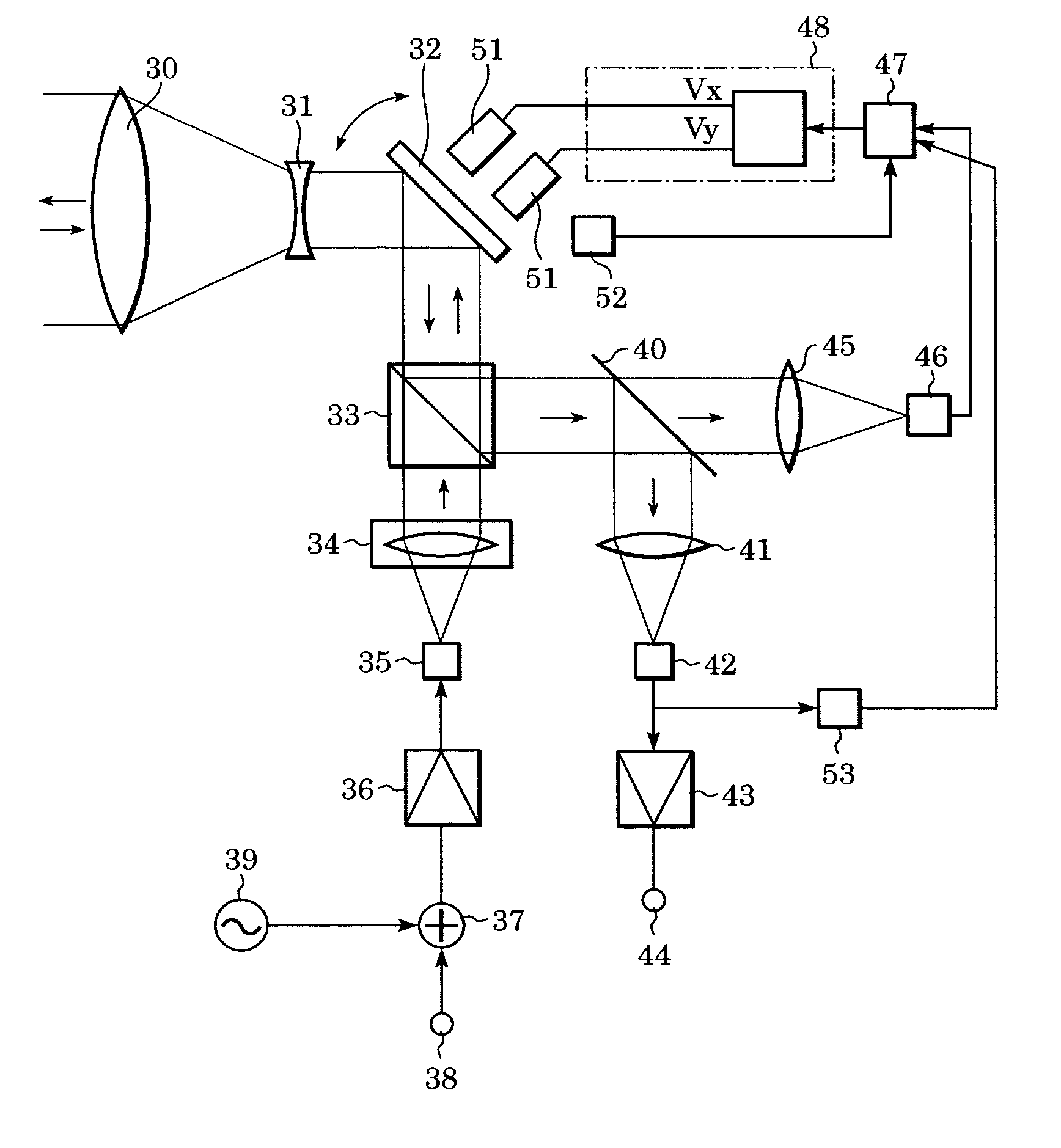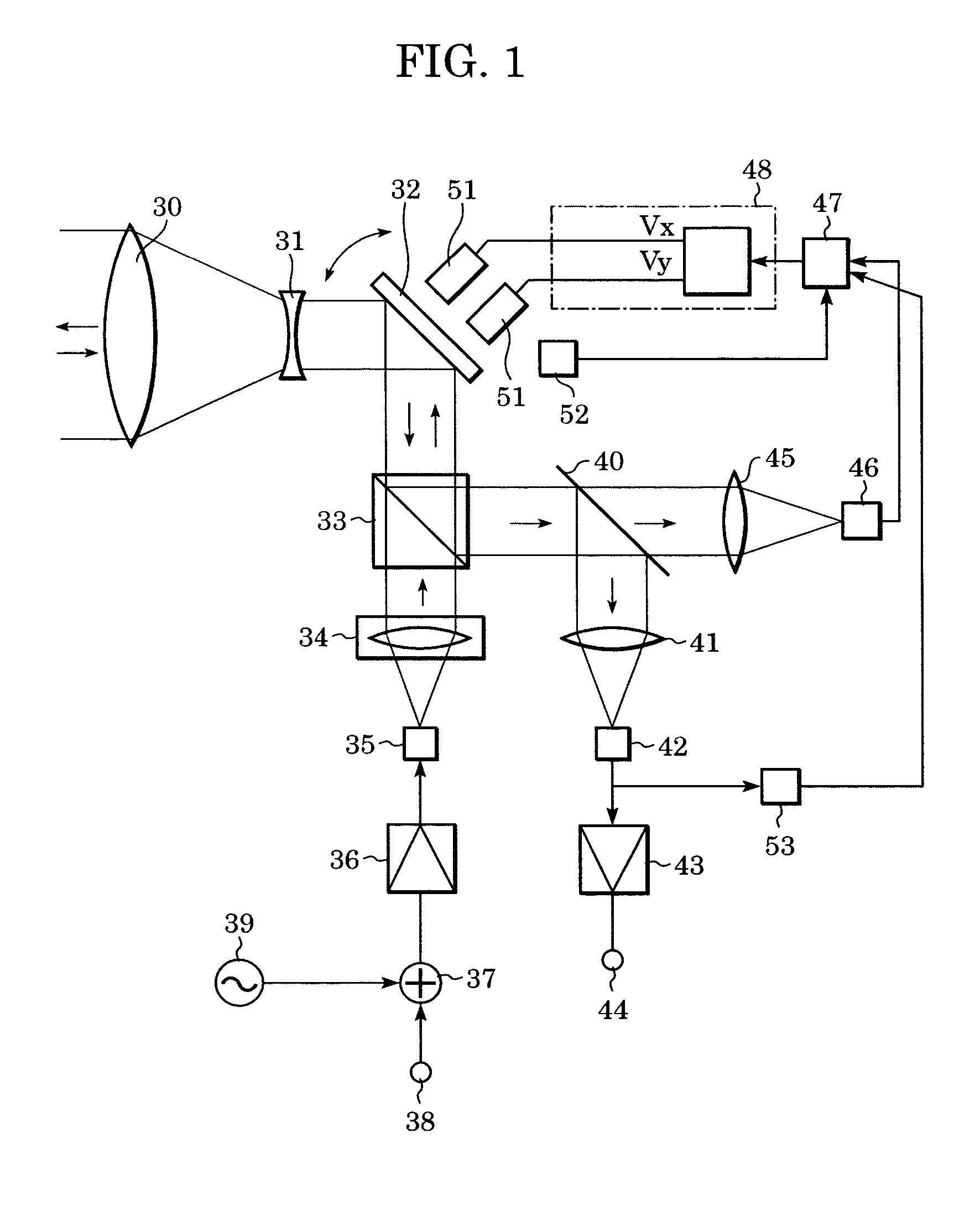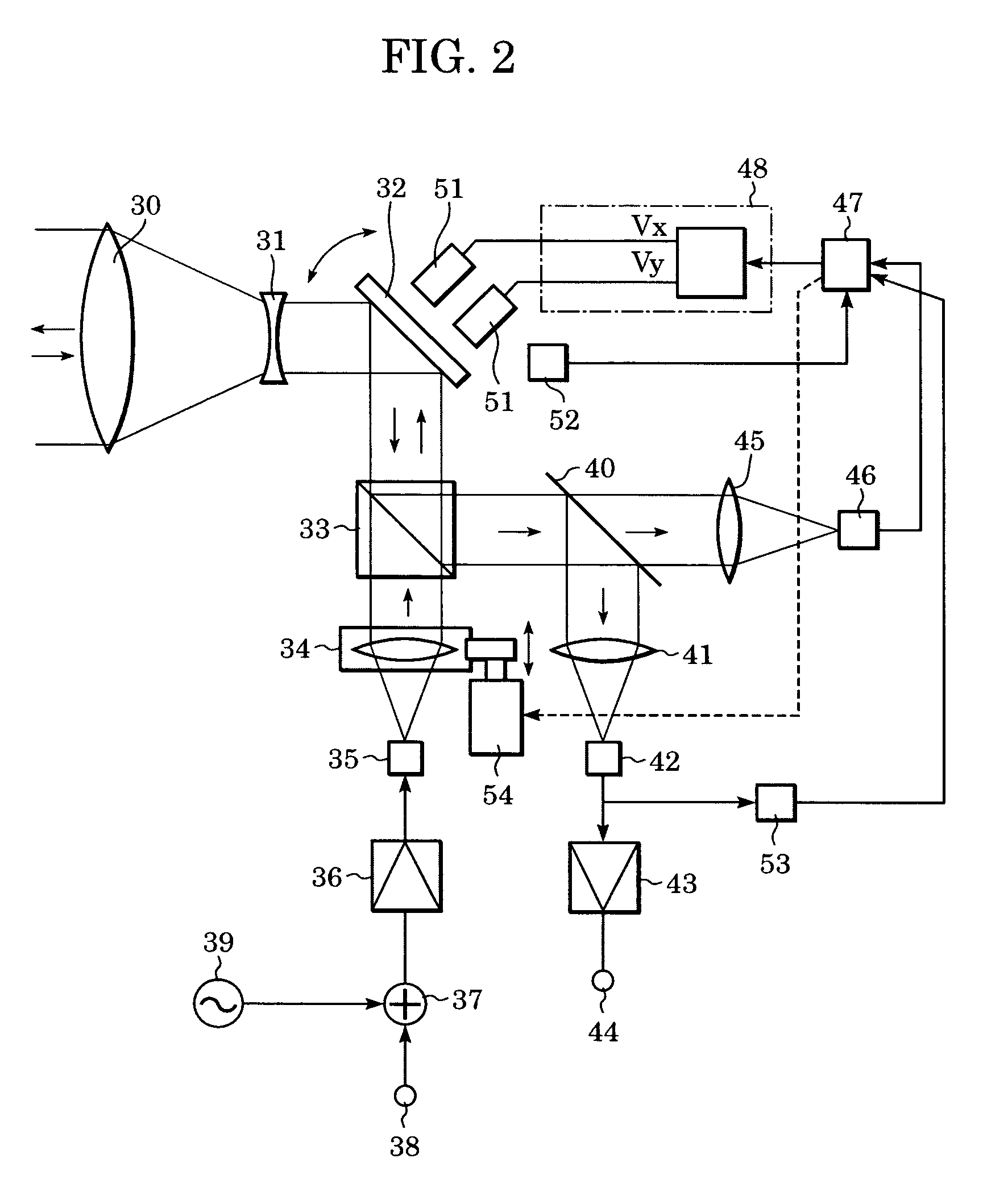Optical-transmission-space determining apparatus and optical-space transmission apparatus
a technology of optical space and determining apparatus, applied in the direction of instruments, optical elements, mountings, etc., can solve the problems of inability to respond to a quick variation, the foregoing known optical space transmission apparatus is incapable of tracking error of light beam and accordingly to an increase or decrease in received light optical power, and the limitation of the installation pla
- Summary
- Abstract
- Description
- Claims
- Application Information
AI Technical Summary
Benefits of technology
Problems solved by technology
Method used
Image
Examples
first embodiment
[0022] Referring now to FIG. 1, the structure of an optical-space transmission apparatus according to a first embodiment of the present invention will be described. FIG. 1 is a perspective view of the optical-space transmission apparatus according to the present embodiment.
[0023] A transmitting main signal from a signal input unit 38 is multiplexed with an automatic-tracking pilot signal from a pilot-signal generating circuit 39 by a optical multiplexing circuit 37; is changed to an optical signal by a light-emitting device 35 after passing through an amplifier 36; passes through a collimator lens 34 and a polarization beam splitter 33; is reflected from a movable mirror 32 (a first movable unit); and, as a transmitting light beam, is projected onto a counterpart apparatus (not shown) through lenses 31 and 30.
[0024] A received light beam from the counterpart apparatus passes through the lenses 30 and 31 and the movable mirror 32; is reflected from the polarization beam splitter 33...
second embodiment
[0040]FIG. 2 is a perspective view of an optical-space transmission apparatus according to a second embodiment of the present invention. According to the present embodiment, on the basis of a difference (a level of scintillation) between two of, for example, the mean, the minimum, and the maximum values of a received-light intensity, the apparatus operates so as to increase a diverging angle of a transmitting light beam to an extent that scintillation does not cause a tracking error, while leaving the control speed unchanged. The same parts as those in the first embodiment are denoted by the same reference numbers and their descriptions are omitted.
[0041] In the same manner as in the first embodiment, when the operating circuit 47 determines that a level of scintillation exceeds a predetermined one and that there is hence a risk that a tracking error caused by the scintillation adversely affects signal transmission, for example, occurrence of a transmission error, the operating cir...
PUM
 Login to View More
Login to View More Abstract
Description
Claims
Application Information
 Login to View More
Login to View More - R&D
- Intellectual Property
- Life Sciences
- Materials
- Tech Scout
- Unparalleled Data Quality
- Higher Quality Content
- 60% Fewer Hallucinations
Browse by: Latest US Patents, China's latest patents, Technical Efficacy Thesaurus, Application Domain, Technology Topic, Popular Technical Reports.
© 2025 PatSnap. All rights reserved.Legal|Privacy policy|Modern Slavery Act Transparency Statement|Sitemap|About US| Contact US: help@patsnap.com



